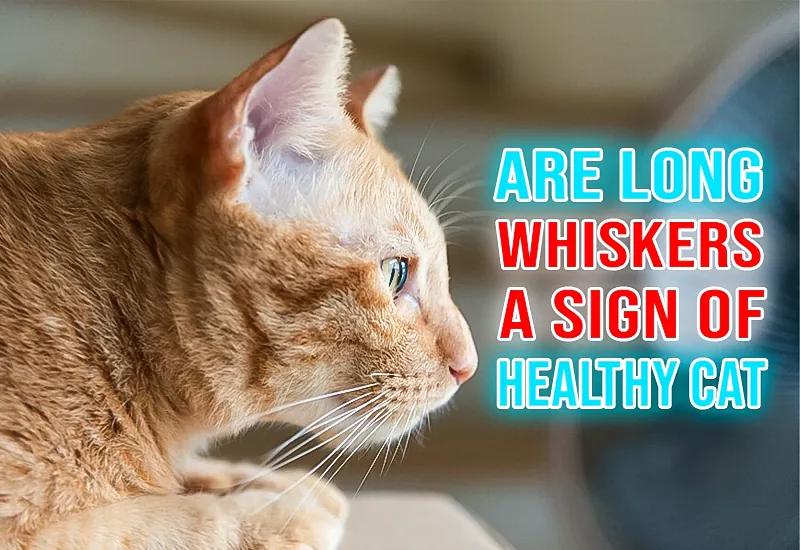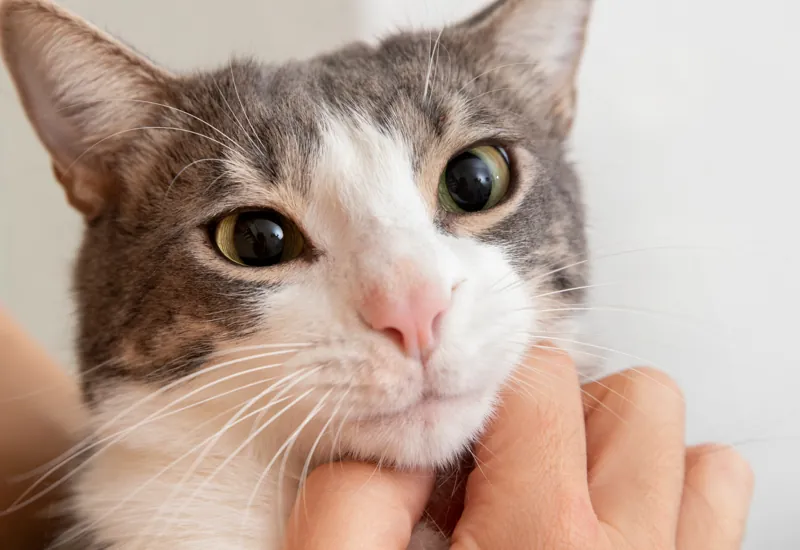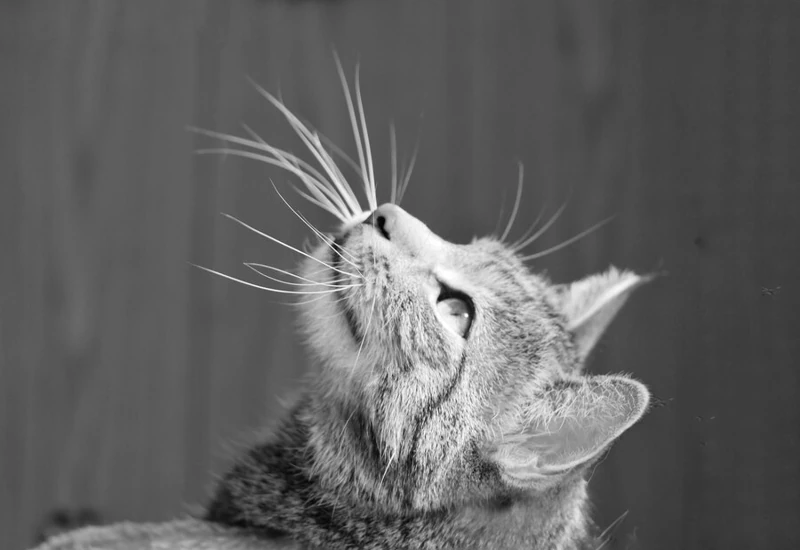Are Long Whiskers a Sign of a Healthy Cat?
Updated: 14 Jul 2024
455

As a cat owner, you may have noticed your cat whiskers growing longer than usual. While it may seem like a harmless physical trait, the length of a cat whiskers can actually provide valuable insights into their overall health and well-being.
Cats are fascinating creatures, and their unique physical features, like whiskers, play a crucial role in their daily lives. Understanding the significance of these sensory organs can help you better care for your beloved pet and recognize any potential health concerns.
In this guide, we’ll explore the relationship between long whiskers and cat health, dispel common myths, and provide expert advice on how to ensure your furry companion is thriving.
Key Data Points on Cat Whiskers
This table summarizes the main valuable key numeric data, facts, and insights from the article, making it easier to quickly reference and better understand the significance of a cat’s whiskers.
| Data Point | Value |
|---|---|
| Average Number of Whiskers on a Cat | 12-24 whiskers |
| Typical Whisker Length | Same width as the cat’s body |
| Whisker Sensitivity Compared to Human Fingertips | 100x more sensitive |
| Percentage of Cat’s Brain Dedicated to Whisker Processing | 40% |
| Lifespan of a Cat Whisker | 2-3 months before shedding and regrowth |
| Percentage of Cats Preferring Whisker-Friendly Bowls | 50-60% |
| Factors Affecting Whisker Length | Age, Nutrition, Stress, Illness |
| Breeds Known for Naturally Longer Whiskers | Siamese, Maine Coon |
| Consequences of Trimming Whiskers | Pain, Disorientation, Behavioral Changes |
| Recommended Grooming Approach | Gentle, Avoid Pulling or Tugging |
| Indicators of Potential Health Issues | Sudden Loss, Discoloration, Unusual Growth |
| Importance of Regular Vet Checkups | Identify Subtle Whisker Changes |
Understanding Cat Whiskers

Whiskers, also known as vibrissae, are specialized hairs found on a cat muzzle, above their eyes, on their chin, and on the backs of their front legs. These tactile hairs are deeply rooted in the skin and connected to a complex network of nerves and blood vessels. Whiskers are not just for show they serve as important sensory organs that help cats navigate their environment, detect prey, and communicate with other felines.
Cats have an incredible sense of touch, and their whiskers play a vital role. Each whisker is equipped with specialized nerve endings that can detect the slightest changes in air currents, vibrations, and physical contact. This allows cats to “feel” their surroundings with remarkable precision, even in low-light conditions or when their vision is obstructed.
The length and thickness of a cat whiskers can vary depending on their breed, age, and individual characteristics. Kittens and younger cats often have shorter, finer whiskers, while older cats may develop longer, more prominent whiskers as they mature.
The Relationship Between Whisker Length and Cat Health
While long whiskers are not necessarily a direct indicator of a cat’s health, they can provide clues about certain aspects of their well-being. Let’s explore the various factors that can influence the length and condition of a cat’s whiskers.
Age and Whisker Length
As cats age, their whiskers tend to grow longer. This is a natural part of the aging process and not a cause for concern. Kittens and younger cats often have shorter whiskers, while older cats may have longer, more prominent whiskers. This is due to the gradual growth and thickening of the whiskers over time.
It’s important to note that the length of a cat’s whiskers is not a reliable indicator of their exact age. Many other factors, such as genetics, diet, and health status, can also influence the growth and appearance of a cat’s whiskers.
For example, some breeds of cats, like the Siamese, are known to have naturally longer whiskers even when they are younger. Conversely, certain health conditions or nutritional deficiencies can lead to premature thinning or loss of whiskers in older cats.
Nutrition and Whisker Length
A cat diet plays a crucial role in their overall health, including the growth and condition of their whiskers. Cats that receive a balanced, high-quality diet are more likely to have healthy, well-maintained whiskers. Conversely, cats with nutritional deficiencies may experience changes in their whisker length or texture.
Proper nutrition ensures that your cat body has the necessary vitamins, minerals, and other essential nutrients to support the growth and health of their whiskers. If your cat diet is lacking in certain nutrients, it could lead to changes in their whisker appearance, such as thinning, brittleness, or premature loss.
For example, a deficiency in protein or essential fatty acids can result in dull, brittle whiskers that are more prone to breakage. Likewise, a lack of vitamins and minerals, such as vitamin A, zinc, or biotin, can impair the growth and maintenance of healthy whiskers.
By providing your cat with a well-balanced diet that meets their specific nutritional needs, you can help ensure their whiskers remain strong, vibrant, and well-maintained.
Stress and Whisker Length
Stress can have a significant impact on a cats physical and mental well-being, including their whiskers. Cats that experience chronic stress or anxiety may exhibit changes in their whisker length or even lose whiskers prematurely.
Factors such as changes in the home environment, introduction of new family members or pets, and even underlying medical conditions can contribute to stress in cats. It’s important to identify and address the underlying causes of stress in your cat life to ensure their overall well-being, including the health of their whiskers.
When a cat is under stress, their body may divert resources away from non-essential functions, like whisker growth, and instead focus on managing the stress response. This can lead to thinning, shortening, or even loss of whiskers as the cat’s body prioritizes other vital processes.
By creating a calm, comfortable environment for your cat and addressing any sources of stress, you can help maintain the health and appearance of their whiskers.
Illness and Whisker Length
In some cases, changes in whisker length or texture may be a sign of an underlying health condition. For example, cats with certain skin conditions, hormonal imbalances, or neurological disorders may experience changes in their whiskers.
Skin conditions, such as allergies or infections, can cause inflammation and irritation that affects the hair follicles where the whiskers are rooted. This can lead to whisker loss, discoloration, or changes in texture.
Hormonal imbalances, like thyroid disorders or adrenal gland issues, can also impact the growth and appearance of a cat whiskers. These conditions can cause the whiskers to become thin, brittle, or grow at an abnormal rate.
Neurological disorders, such as nerve damage or central nervous system problems, can interfere with the sensory function of the whiskers, leading to changes in their length, sensitivity, or overall appearance.
If you notice significant changes in your cat whiskers, such as sudden loss, discoloration, or unusual growth patterns, it’s best to consult with your veterinarian. They can perform a thorough examination and recommend appropriate treatment to address any potential health issues.
Myths About Long Whiskers in Cats

Despite the common belief that long whiskers are a sign of a healthy cat, there are several myths surrounding this topic that need to be addressed. Let’s debunk these misconceptions and provide the facts.
Myth 1: Long Whiskers Indicate a Cat’s Age
While older cats tend to have longer whiskers, the length of a cat’s whiskers is not a reliable indicator of their exact age. Many factors, such as genetics, diet, and health status, can influence whisker length. Some younger cats may have longer whiskers, while older cats may have shorter or thinner whiskers due to various factors.
For example, certain breeds, like the Maine Coon, are known to have naturally longer whiskers throughout their lifespan. Conversely, cats with underlying health conditions or nutritional deficiencies may experience premature thinning or loss of whiskers, making them appear younger than their actual age.
Myth 2: Long Whiskers Enhance a Cat’s Senses
While whiskers are essential for a cat sensory perception, the length of their whiskers does not necessarily enhance their senses. Cats rely on the sensitivity of their whiskers, not their length, to navigate their environment and detect prey. The length of a cat whiskers is more closely related to their overall health and well-being than their sensory capabilities.
Whiskers are equipped with specialized nerve endings that allow cats to detect even the slightest changes in their surroundings. The length of the whiskers does not directly correlate with the sensitivity or accuracy of this sensory information. What matters most is the proper functioning and health of the whiskers, rather than their physical dimensions.
Myth 3: Trimming Whiskers is Harmless
It’s important to never trim or cut a cat whiskers, as this can cause significant distress and discomfort. Whiskers are deeply rooted in the skin and connected to a complex network of nerves. Cutting them can lead to pain, disorientation, and even behavioral changes in cats.
Whiskers are not just decorative features they play a crucial role in a cat ability to perceive their surroundings and interact with their environment. Trimming or cutting a cat whiskers can severely disrupt their sensory perception and cause them to feel anxious, confused, and even unsafe in their own environment.
Imagine how it would feel if someone suddenly removed your sense of touch or balance. That’s how a cat might experience the loss of their whiskers. It’s a traumatic experience that can have lasting effects on their physical and mental well-being.
Caring for Your Cat’s Whiskers
Here are some additional interesting facts, numeric data, and caring tips related to cat whiskers that can be included in the article to provide a better user experience:
Cat Whisker Care Tips
| Tip | Explanation |
|---|---|
| Avoid Trimming Whiskers | Trimming a cat’s whiskers can cause distress and disorientation as it disrupts their sensory perception. |
| Use Wide, Shallow Bowls | Bowls with steep sides can cause whisker fatigue by constantly brushing against the sensitive whiskers. |
| Groom Regularly | Regular grooming helps remove dirt, debris, and excess hair from the whiskers, maintaining their health. |
| Reduce Stress | Chronic stress can lead to whisker loss or changes in appearance, so provide a calm environment. |
| Monitor for Changes | Keep an eye out for sudden whisker loss, discoloration, or unusual growth patterns, as they may indicate an underlying health issue. |
| Consult a Vet | If you notice any concerning changes in your cat’s whiskers, it’s best to have a veterinarian examine them. |
To ensure your cat’s whiskers remain healthy and well-maintained, follow these expert tips:
Provide a Balanced Diet
Feeding your cat a high-quality, balanced diet that meets their nutritional needs is essential for supporting the growth and condition of their whiskers. Look for cat food that is formulated with the appropriate balance of proteins, fats, carbohydrates, vitamins, and minerals to promote overall health and well-being.
If you’re unsure about the best diet for your cat, consult with your veterinarian or a qualified pet nutritionist. They can provide personalized recommendations based on your cat’s age, breed, activity level, and any specific health concerns.
It’s important to note that sudden changes in your cat diet can also impact the health of their whiskers. Gradual transitions to a new food are recommended to avoid disrupting the delicate balance of nutrients required for optimal whisker growth and maintenance.
Reduce Stress
Creating a calm, comfortable environment for your cat is crucial for their overall well-being, including the health of their whiskers. Provide plenty of hiding spots, scratching posts, and interactive toys to help your cat feel secure and engaged. Minimize changes to their routine and address any potential sources of stress, such as the introduction of new family members or pets.
Chronic stress can lead to a variety of health issues in cats, including changes in their whisker length or texture. By reducing stress and promoting a peaceful living environment, you can help maintain the health and appearance of your cat’s whiskers.
It’s also important to be mindful of your own interactions with your cat. Gentle, positive reinforcement and avoiding sudden movements or loud noises can help create a stress-free atmosphere that supports the well-being of their whiskers.
Groom Regularly
Regular grooming is an essential part of caring for your cat’s whiskers. Use a soft-bristled brush or a damp cloth to gently clean their whiskers, removing any dirt, debris, or excess hair. Be sure to avoid pulling or tugging on the whiskers, as this can cause discomfort and potentially damage the sensitive nerve endings.
Grooming not only helps maintain the cleanliness and appearance of your cat whiskers but also provides an opportunity to bond with your feline friend and monitor for any changes or abnormalities.
When grooming your cat whiskers, be gentle and patient. Cats can be sensitive about their whiskers, so it’s important to approach the task with care and respect. If your cat seems uncomfortable or resistant, stop and try again another time, or consult with a professional groomer for guidance.
Monitor for Changes
Keep a close eye on your cat’s whiskers for any significant changes in length, texture, or appearance. If you notice anything unusual, such as sudden loss, discoloration, or unusual growth patterns, consult with your veterinarian to rule out any potential health issues.
Changes in a cat whiskers can be an early indicator of underlying health problems, so it’s important to address any concerns promptly. Your veterinarian can perform a thorough examination, recommend appropriate diagnostic tests, and provide the necessary treatment to ensure your cat’s well-being.
Regular check-ups with your veterinarian can also help identify any subtle changes in your cat’s whiskers that may not be immediately noticeable to you. This proactive approach can help catch potential health issues early and ensure your cat receives the appropriate care.
Conclusion
In conclusion, while long whiskers are not necessarily a direct indicator of a healthy cat, they can provide valuable insights into your feline friend’s overall well-being. By understanding the relationship between whisker length and cat health, dispelling common myths, and providing proper care for your cat’s whiskers, you can help ensure your furry companion thrives.
Remember, every cat is unique, and their whiskers may vary in length and appearance depending on their age, breed, and individual characteristics. If you have any concerns about your cat’s health or well-being, always consult with a qualified veterinarian for professional advice and guidance.
By staying informed and proactive in caring for your cat’s whiskers, you can help maintain their physical and mental well-being, ensuring they live a happy, healthy life by your side.
Key Takeaways
- Whiskers are specialized hairs that serve as important sensory organs for cats, helping them navigate their environment, detect prey, and communicate with other felines.
- The length of a cat’s whiskers can provide clues about their age, nutrition, stress levels, and overall health, but it’s not a direct indicator of their well-being.
- Myths about long whiskers enhancing a cat’s senses or being a reliable indicator of age are not accurate.
- Providing a balanced diet, reducing stress, and regular grooming can help maintain your cat’s whiskers in good condition.
- Consult with a veterinarian if you notice any unusual changes in your cat’s whiskers or overall health, as it may be a sign of an underlying issue.
- Every cat is unique, and their whiskers may vary in length and appearance based on individual characteristics and factors.
By understanding the importance of your cat’s whiskers and following these expert tips, you can help ensure your furry companion remains healthy, happy, and thriving.
How do I know if my cat is losing too many whiskers?
It’s okay for your cat to lose some whiskers, just like it loses hair. But if you start finding lots of whiskers or see your cat has lost many whiskers all at once, this could be a problem.
Why does my cat have such long whiskers?
Cats have long whiskers because they help them sense things close to them. Cats can smell and hear very well, but they can’t see things that are close to them very clearly. Whiskers help them understand what’s near them by sending information to their brain.
Does it hurt a cat to cut off its whiskers?
If you cut a cat’s whiskers, it won’t feel pain, but it will get stressed and confused. This is because cats use their whiskers to talk, stay balanced, keep safe, and understand their surroundings.
Please Write Your Comments